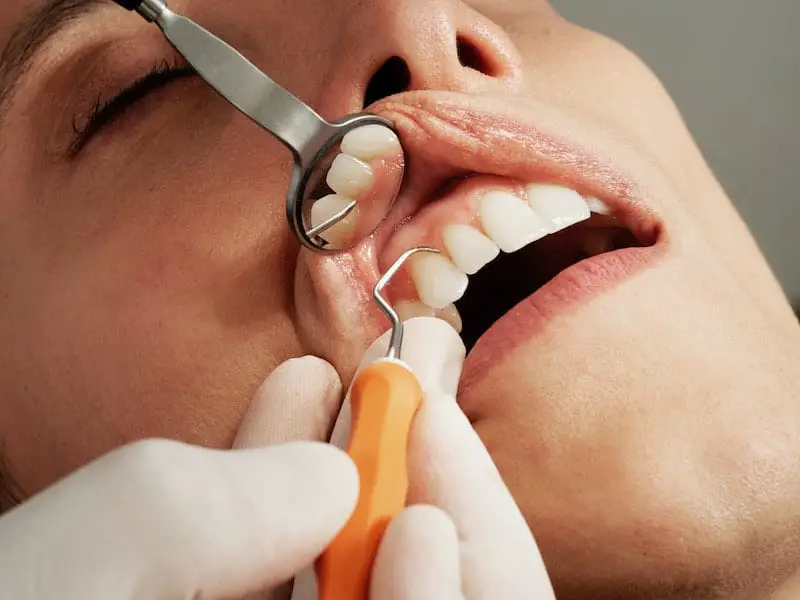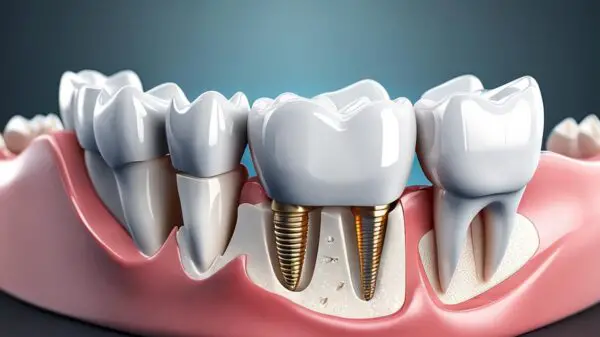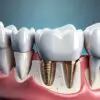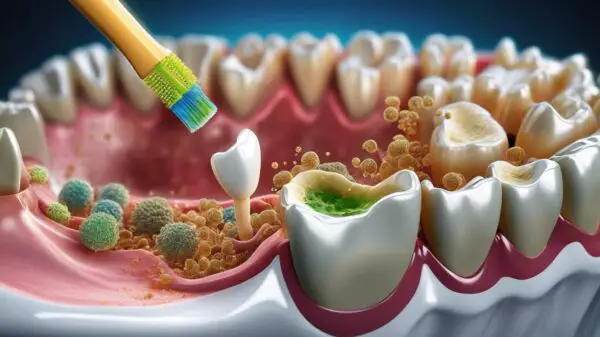Complete Guide to Root Canals vs Extractions
When it comes to dental procedures, there can be great confusion surrounding the many alternatives. From bone grafts to root canals to extractions, how do you know which procedure your dentist may recommend? Although there are some similarities between these restorative procedures, they are really quite different in nature.
What is the primary difference between a root canal and an extraction? The primary difference between a root canal and a tooth extraction is that, with a root canal, the individual maintains their natural tooth structure. The root system of the tooth is simply cleaned, removing the source of infection. With an extraction, the entire tooth including its root system is removed and replaced with a dental implant or similar prosthodontic.
For most individuals, the thought of both of these procedures fills them with dread. However, both root canals and extractions are incredibly common dental procedures that offer great outcomes. In this post, we will discuss some of the differences between root canals and extractions. We will then take a closer look at both of these dental procedures.
Primary Difference Between Root Canals & Extractions
As mentioned previously, the primary difference between a root canal and extraction is that, with a root canal, the individual maintains their natural tooth structure. The greatest determinant of whether the individual is a candidate for a root canal over a tooth extraction is the severity of the infection.
For mild to moderate cases of infection, a dentist is able to use root canal therapy to effectively eliminate the infection from the root system. This leaves the natural tooth structure intact while removing the source of pain and inflammation.
In more severe cases of infection, however, a root canal may not be enough to effectively eliminate the infection. If a dentist finds that the infection has affected the structure and integrity of the natural tooth, they will opt for extraction.
By extracting the infected tooth along with its root system, they can completely eliminate the possibility of reinfection or spreading of the infection to other areas of the mouth. Once the extraction location is fully healed, the dentist can replace the missing tooth with a dental implant or another type of prosthodontic such as a bridge or crown.
What is Root Canal Therapy?
Root canal therapy is a conservative treatment to preserve infected teeth and relieve discomfort. During a root canal, the dentist removes the damaged areas of the tooth including the infected root system. Your dentist will then clean your teeth and reshape your root canals, using specialized rotary files for accurate, minimal-discomfort care.
Once the source of infection is eliminated, the dentist will refill the natural tooth using a rubber-like material called gutta-percha. Finally, your dental team will restore your tooth with a customized crown.
Benefits of Root Canal Treatment
Although no one enjoys the prospect of root canal treatment, this type of restorative dentistry procedure provides several benefits.
Root Canal Treatment Eliminates Infection
A cavity or other oral damage can allow bacteria to reach the inside of your tooth, resulting in an infection. An infected tooth can have a serious, negative impact on your health, and it is critical to seek treatment right away.
Your dental team can determine if you can address the pain and sensitivity in your teeth with root canal treatment at their office. With conservative, gentle techniques, your dentist can remove decay and infection and repair the tooth with a new dental restoration.
Root Canal Treatment Prevents Tooth Loss
If you fail to seek treatment for an infection in your tooth, the infection will continue to grow. Once the infection is considered severe, your dentist will likely have no other option than to extract the tooth. In this way, root canal treatment prevents tooth loss and allows the individual to maintain their natural tooth.
Reasons to Consider Root Canal Treatment
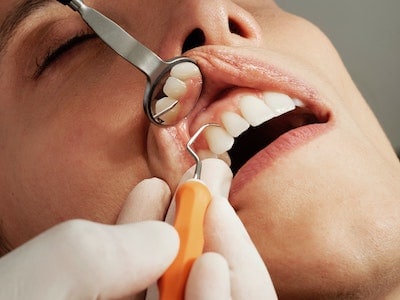 Root canal treatment is used to eliminate decay and infection from the tooth. Despite what many patients believe, root canal treatments are not extremely painful. Most patients compare a root canal treatment to receiving a filling.
Root canal treatment is used to eliminate decay and infection from the tooth. Despite what many patients believe, root canal treatments are not extremely painful. Most patients compare a root canal treatment to receiving a filling.
With the use of advanced techniques and local anesthetics, your dentist can minimize your discomfort during the procedure. Root canal treatment is a necessary step in preserving your natural tooth. In severe cases, if your dentist cannot save your tooth, they can perform an extraction and replace the tooth with a lifelike restoration.
Symptoms That May Indicate the Need for a Root Canal
You may be suffering from a dental infection if you are experiencing symptoms such as:
- Pain in a specific tooth
- Generalized pain in the jaw near the tooth
- Swollen gums around the painful tooth
- Bad breath and a bitter taste in the mouth
- Sensitivity to temperature
- A sore in the gum near the affected tooth
- Discolored gums around the damaged tooth or discoloration of the tooth itself
If you are exhibiting any of the symptoms of dental infection, you should contact your dentist right away to schedule an appointment. If left untreated, an infection can result in tooth loss, and can also affect other areas of your overall health. Infection can spread to your jaw and other teeth, leading to serious illness.
What to Expect During Root Canal Therapy
When you arrive for your appointment, your dental team will carefully examine your tooth to ensure that root canal treatment is the best course of action. They will also take x-rays to determine the extent of infection within your tooth.
Before beginning treatment, your dentist will carefully inject a local anesthetic to minimize any potential for pain. They can also provide further sedation to ensure your comfort during treatment.
Once you are ready for the root canal procedure, your dentist will begin by removing the damaged areas of your tooth, including the tissues within the root canals. The root canal may be disinfected and then altered to accommodate a filling. When this process is complete, your dentist will fill your tooth with a rubber-like material called gutta-percha before providing a dental restoration to rebuild its structure.
Many dentists use advanced dental technology such as CEREC® to provide a same-day crown, completely restoring your tooth. In less than an hour, your dentist can create a customized restoration that can match your surrounding teeth. This dental crown can restore full function to your tooth and preserve the natural tooth from additional decay or infection.
What is Tooth Extraction?
Your dentist will never recommend extraction unless it is absolutely necessary. However, in some cases, removal may be the only option for a tooth exhibiting severe damage. In these cases, your dentist can perform gentle, safe extractions to preserve your oral health and relieve painful symptoms.
There are times when tooth extraction is the best way to address certain oral health issues. For example, if tooth decay is too advanced to be treated with a root canal, extraction can prevent infection of the bone and gum tissue.
In other instances, a tooth may be causing surrounding teeth to become impacted. Your dentist can assess your symptoms and determine if a tooth extraction is necessary. If a tooth extraction is determined to be the best course of action, your dental team will use modern techniques and technology to make tooth extraction comfortable and beneficial.
Fortunately, there are many advanced dentistry procedures available, making it possible to restore your smile using one of these missing teeth options.
Benefits of Tooth Extraction
Having a tooth extracted is perhaps the most dreaded dental procedure. However, there are many ways that this procedure can be beneficial to an individual’s oral health and overall wellbeing.
Eliminates the Potential for Recurring Infection in Tooth
Although the occurrence of reinfection following a root canal is low, it is possible. Even the most experienced dental team can miss a spot of an infected tooth during the root canal process, leading to additional infection. When reinfection occurs, you must have another root canal to address the issue.
However, by extracting the tooth you are eliminating the potential for a recurring infection! This is perhaps one of the greatest benefits of tooth extraction over root canal therapy.
Protects Surrounding Teeth From Additional Infection
When one tooth becomes infected, specifically at a root level, the infection can spread to the surrounding teeth and oral tissue. By removing the infected tooth, you are protecting surrounding teeth from future infection or disease! With the many incredible advancements in dental technology, a dental implant can replace your tooth providing a beautiful, healthy smile.
Reasons to Consider a Tooth Extraction
Extractions are the best way to completely eradicate the infection from the teeth and oral tissue. If you have experienced recurrent infections in your tooth, it may be time to consider an extraction! While this is certainly an intimidating procedure, the results are highly beneficial.
Dentists will not recommend an extraction unless they believe there is truly no better alternative. For this reason, it is important to trust that your dental team has your best interests in mind as you pursue extraction or root canal therapy.
Symptoms That May Indicate the Need for Tooth Extraction
Because there are many reasons your dentist may recommend extraction, there are also many types of symptoms. In most cases, a dentist will recommend alternative forms of treatment before resorting to extraction. Your dentist may recommend tooth extraction if:
- One or more teeth are severely crowding the other teeth in the arch, creating pain and misalignment
- Severe infection is present that a root canal will not eliminate
- A baby tooth has failed to fall out and make room for permanent teeth
- A tooth has severe structural damage due to trauma
- The gums surrounding a tooth have become so severely receded and infected due to periodontal disease that they can no longer support it
- The surrounding jaw bone has become too receded or damaged to support the tooth
If your dentist recommends tooth extraction, you must take timely action. Delaying the necessary extraction of a tooth can cause further damage to the surrounding teeth, tissue, and bone.
What to Expect During a Tooth Extraction
In order to determine whether a tooth should be extracted, your dentist will perform an in-depth examination including x-rays to gain an understanding of your oral health. When a tooth needs to be extracted, your dentist will gently inject a local anesthetic into the gum line near the tooth.
After the area has been sufficiently numbed, he will carefully loosen the tooth within its socket, then remove it using forceps. If necessary, they may incise the soft tissue surrounding the tooth to extract it more easily.
Dentists understand that many patients have difficulty relaxing in the dentist’s chair due to anxiety, conditions such as arthritis, and other factors. To accommodate these patients, many dental practices offer sedation dentistry that can induce deep relaxation and increased comfort.
During the planning phase of your treatment, patients must be frank about their needs so that their dental team can take steps to maintain comfort.
Recovery Expectations Following a Tooth Extraction
After your tooth extraction, your dentist may prescribe pain medication, anti-inflammatories, or antibiotics there was an infection in the tooth. In the days following the procedure, you may experience some swelling, tenderness, and bleeding.
If you have experienced some bone recession at the extraction site, your dentist can perform a bone grafting procedure. This involves placing donor tissue to restore the jaw, setting the stage for replacing the tooth. You have several restorative options. In most cases, the best solution is dental implants, which are titanium posts that replace tooth roots and support crowns, bridges, and dentures.
Are Root Canals or Extractions More Beneficial?
When it comes to whether a root canal or an extraction is more beneficial, the answer depends greatly on your unique situation. For many individuals, a root canal is a cheaper alternative as they can maintain their natural teeth.
If your dentist suspects that the infection is severe or widespread, an extraction is the best way to eliminate the issue. For this reason, it is important to work with a dental team that you trust as you approach this complex process.
A root canal or tooth extraction may be quite intimidating. However, it is important to remember that delaying treatment will not remedy the situation. By seeking appropriate treatment in a timely manner, you can preserve your teeth and continue working towards the smile of your dreams!



